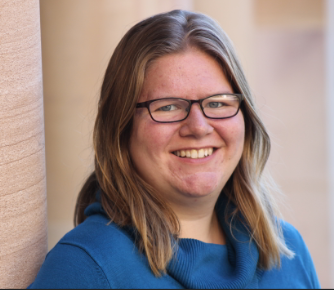Publications
PhD Thesis
Using Simulations of Black Holes to Study General Relativity and the Properties of Inner Accretion Flow
Hoormann 2016, click reference for link to article
For the Public
The Conversation Curious Kids: Where Do Black Holes Lead To?
Hoormann, The Conversation 7/9/2018
The Conversation Curious Kids: Can Earth be Affected by a Black Hole in the Future?
Hoormann, The Conversation 7/21/2019
Analysis Contributions
CIV Black Hole Mass Measurements with the Australian Dark Energy Survey (OzDES)
Hoormann et al 2019, MNRAS 487:3
Quasar Accretion Disk Sizes from Continuum Reverberation Mapping in the DES Standard Star Fields
Yu et al 2018, submitted to ApJ
Quasar Accretion Disk Sizes from Continuum Reverberation Mapping from the Dark Energy Survey
Design of the Telescope Truss and Gondola for the Balloon-Borne X-ray Polarimeter X-Calibur
Kislat et al 2017, JAI 6:1740003
Studies of the Origin of High-Frequency Quasi-Periodic Oscillations of Mass-Accreting Black Holes in X-ray Binaries with Next-Generation X-Ray Telescopes
Behestipour, Hoormann, Krawczynski 2016, ApJ 826:203
Testing General Realtivity’s No-Hair Theorem with X-Ray Observations of Black Holes
Hoormann, Behestipour, Krawczynski 2016, PRD 93:044020
X-Ray Polarimetry with the Polarizations Spectroscopic Telescope Array (PolSTAR)
Krawczynski et al 2016, APh 75:8
Supernova Classifications
Classification of 26 DES Supernova with OzDES
Calcino et al 2018, ATel 11147
Classification of 25 DES Supernova with OzDES
Calcino et al 2018, ATel 11146
Classification of 17 DES Supernova with OzDES
Hoormann et al 2016, ATel 9855
Data Contributions
First Cosmology Results Using Type Ia Supernova From the Dark Energy Survey: Simulations to Correct Supernova Distance Biases
Kessler et al 2019, MNRAS 485:1171
First Cosmology Results Using Type Ia Supernova From the Dark Energy Survey: Constraints on Cosmological Parameters
Rapidly Evolving Transients in the Dark Energy Survey
Pursiainen et al 2018, MNRAS 481:894
First Cosmology Results Using Type Ia Supernova From the Dark Energy Survey: Survey Overview and Supernova Spectroscopy
D’Andrea et al 2018, submitted to AJ
First Cosmology Results Using Type Ia Supernova From the Dark Energy Survey: Effects of Chromatic Corrections to Supernova Photometry on Measurements of Cosmological Parameters
Lasker et al 2018, submitted to MNRAS
First Cosmology Results Using Type Ia Supernova From the Dark Energy Survey: Analysis, Systematic Uncertanties, and Validation
Brout et al 2018, submitted to ApJ
First Cosmology Results Using Type Ia Supernova From the Dark Energy Survey: Measurement of the Hubble Constant
Macaulay et al 2018, submitted to MNRAS
Cosmological Constraints from Multiple Probes in the Dark Energy Survey
Abbott et al 2018, arXiv:1811.02375
DES Science Portal: Computing Photometric Redshifts
Gschwend et al 2018, A&C 25:58
Dark Energy Survey Year 1 Results: Galaxy Clustering for Combined Probes
Elvin-Poole et al 2018, PRD 98:042006
Dark Energy Survey Year 1 Results: Redshift Distributions of the Weak-Lensing Source Galaxies
Hoyle et al 2018, MNRAS 478:592
Dark Energy Survey Year 1 Results: Cross-Correlation Redshifts - Methods and Systematics Characterization
Gatti et al 2018, MNRAS 477:1664
OzDES Multifibre Spectroscopy for the Dark Energy Survey: 3-yr Results and First Data Release
Childress et al 2017, MNRAS 472:273
What is with these crazy long author lists?
If you have clicked on the links to the papers you will have seen that many of these papers have very long author lists. You may be wondering how exactly 50+ people contributed to a 15 page paper. This is something that is quite common in observational astronomy research. Many of the surveys like the Dark Energy Survey (DES) and Australian Dark Energy Survey (OzDES) are made up of large collaborations of people. In order to run they require extensive work from the community. These are infrastructure tasks such as building the instruments, doing the observing, performing data reduction, maintaining the database, etc. Like any other academic field the old adage “publish or perish” is true in astronomy as well. While critically important to getting the data necessary to do the cool science, these are often tasks that don’t result in publications of their own. In DES and OzDES the builder system is designed to recognize those who have spent a significant amount of time on the infrastructure of the survey by allowing them to gain authorship on papers that use the survey’s data. Other surveys have similar systems. I am an OzDES builder. I gained this status through regularly going to the telescope to observe, running the weekly telecons, and maintaining the record of everyone in the collaboration’s contribution to the survey. This means that I am allowed to be an author on any paper that directly uses data taken by OzDES. Generally those who directly contributed to the analysis of the paper are first on the author list and then all the builders are listed (in alphabetical order). For papers presenting the key science results from the survey the entire author list is typically alphabetical.
